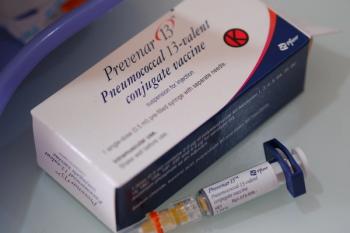
Meta-analysis Examines Comorbid Relationship Between Migraine, Asthma
Migraine is frequently comorbid with asthma. A new analysis examines whether there is a direct relationship between the 2 diseases.
In the first study of its kind, investigators indicated that migraine may be a potential risk indicator for asthma, and vice versa.
The first meta-analysis of population-based studies that assessed the comorbid relationship between migraine and asthma was published in
Migraine is frequently comorbid with asthma, the investigators noted, as a condition recognized as “acephalic migraine” and “pulmonary migraine”.
“The common pathophysiologic mechanisms of inflammation and immune dysfunction between the 2 diseases could explain the bidirectional association. For example, atopy, various inflammatory mediators, or elevated neuropeptide mediators contribute to both migraine and asthma,” the investigators wrote in the study.
In addition, the shared triggering and environmental factors such as air pollutants are related to the occurrence or aggravation of asthma and the rate of emergency department visits for migraine. Emotional stress or psychological distress, as anxiety or depression, due to asthma could increase susceptibility to migraine and vice versa.
After an extensive review of published literature on the topic, the investigators analyzed 15 studies that included nearly 1.2 million individuals.
“We found that migraine was associated with 54% increased prevalence and 42% greater risk of asthma, and vice versa, asthma associated with 45% increased prevalence and 47% greater risk of migraine,” the investigators wrote.
Still, the exact pathway leading to comorbidity of migraine and asthma remains unclear, the investigators said. “Previous studies have demonstrated an insight into the relationship between migraine and asthma from shared inflammatory, immune, and genetic factors.”
Studies have shown that allergic responses triggered by allergens such as pollen release various inflammatory mediators or elevated neuropeptide mediated by mast cells, leading to hypersensitivity of airway responses in patients with asthma. In migraine, mast cells in the dura matter activated by allergens may secrete proinflammatory and vasodilatory molecules, which are presumed to cause the activation of the trigeminal pain pathway underlying migraine pathogenesis.
In addition, parasympathetic hyperactivity is believed to be involved in the connection between asthma and migraine. An increased cholinergic tone has been suggested to trigger bronchospasm in asthma, they wrote.
Although migraine and asthma may share a pathogenesis process, it is difficult to confirm whether there is a direct relationship between the 2 diseases, the investigators acknowledged.
Their analysis was also limited because only 1 case-control study, primarily of adolescents, and 5 of 6 cohort studies were carried out in Asia, potentially limiting the generalizability of the findings to region and population, they wrote.
“Even so, our findings are still of important implications. The bidirectional relationship we found might aid in preventing or identifying people with these two diseases,” the investigators wrote. “It is necessary to get further information about potential overlapping pathways in pathogenesis, which may facilitate the development of new treatment strategies for migraine and asthma.”
Reference:
1. Wang L, Zi-Ru D, et al. The comorbid relationship between migraine and asthma: A systematic review and meta-analysis of population-based studies. Frontiers inMedicine. January 13, 2021. doi:10.3389/fmed.2020.609528
Newsletter
Pharmacy practice is always changing. Stay ahead of the curve with the Drug Topics newsletter and get the latest drug information, industry trends, and patient care tips.




































































































































